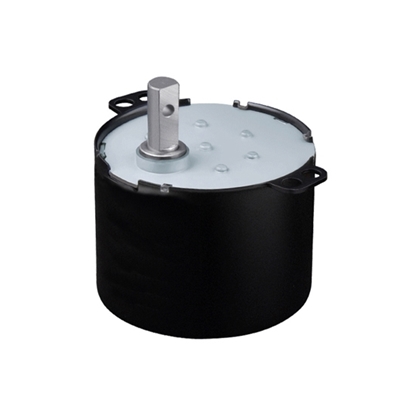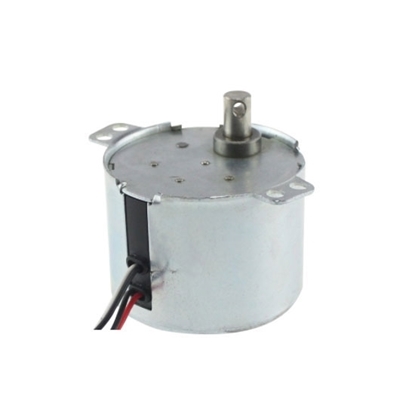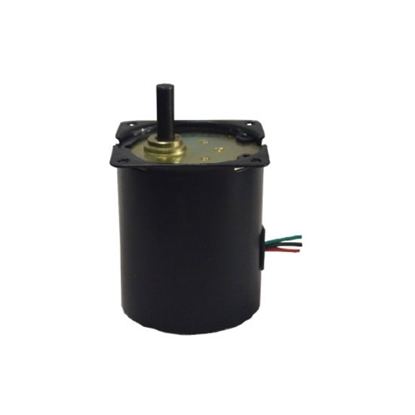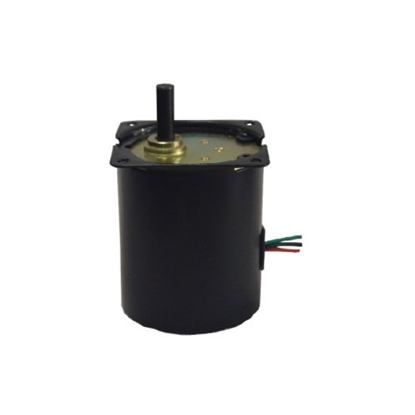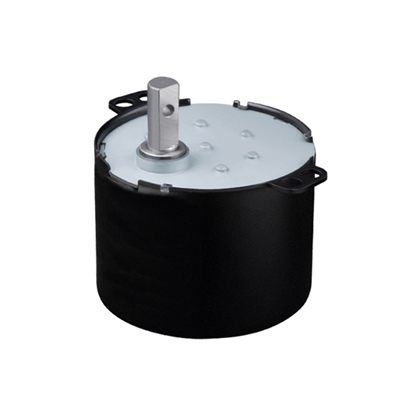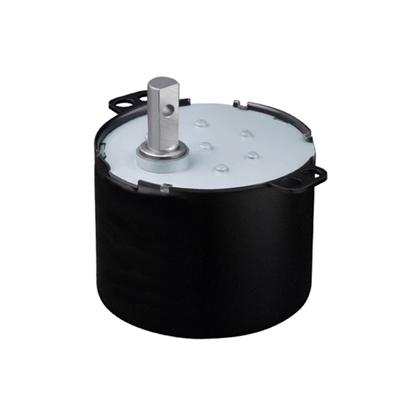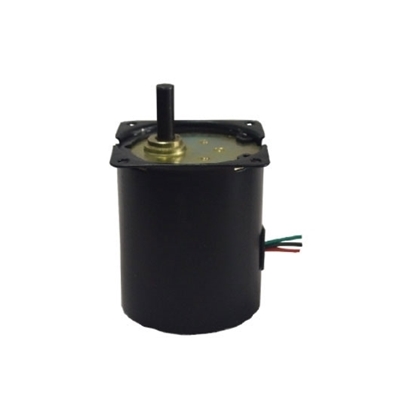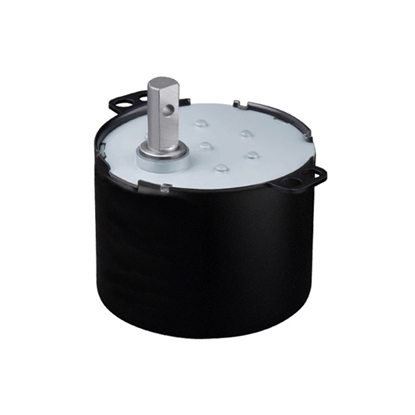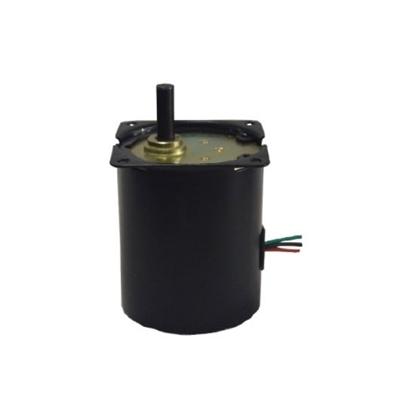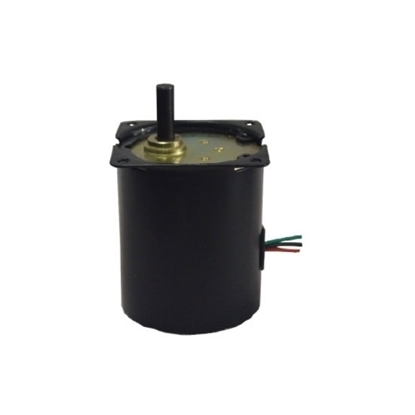Synchronous Motors
1 rpm AC Synchronous Gear Motor
2.5 rpm AC Synchronous Gear Motor, 12V/24V/110V/220V
5 rpm AC Synchronous Gear Motor, 24V/110V/220V
10 rpm AC Synchronous Gear Motor, 24V/110V/220V
15 rpm AC Synchronous Gear Motor
20 rpm AC Synchronous Gear Motor
30 rpm AC Synchronous Gear Motor, 24V/110V/220V
50 rpm AC Synchronous Gear Motor
60 rpm AC Synchronous Gear Motor, 24V/110V/220V
75 rpm AC Synchronous Gear Motor, 24V/110V/220V
AC synchronous motor is an electric motor of which rotor rotates at the same speed as the rotating magnetic field generated by the stator windings. The current in a synchronous motor is in phase ahead of the voltage, that is the synchronous motor is a capacitive load. Therefore, synchronous motors are used to improve the power factor of the power supply system.
ATO offers competitive price AC synchronous motor with different speeds, 1 rpm, 2.5 rpm, 5 rpm, 10 rpm, 30 rpm, 60 rpm, 75 rpm can be selected. Synchronous gear motor match 12V, 24V, 110V, 240V voltage is the best choice.
AC synchronous gear motor is widely used in air cooler, laminator, outdoor auto control machine and monitor, etc.
Synchronous vs. Induction Motor:

Many people want to know what is the difference between synchronous and asynchronous motors. There are some main differences in the follow.
- Construction. The stator windings of synchronous and induction motors are alike, and the main difference lies in the structure of the rotor. There are DC field windings in the rotor of AC synchronous motor, which need to be provided with the external excitation power introduced through the slip ring. However, the rotor windings of induction motor is short-circuit, which produce current by electromagnetic induction.
- Working Principle. For permanent magnet synchronous motor, it rotates by the driving torque generated by the interaction between the rotating magnetic field of the stator and the secondary magnetic field of the rotor. Three-phase induction motor's stator core is embedded with three-phase symmetrical windings. After the power on, between the stator and rotor produce a rotating magnetic field which rotates at a synchronous speed.
- Speed. Induction motor is stator into the alternating current, generating a rotating magnetic field, rotor induction and magnetic field, so that the two magnetic fields. The rotor of a synchronous motor is artificially charged with direct current to create a constant magnetic field, so that the rotor moves in permanent magnet synchronous motor with the stator's rotating magnetic field.
- Application. Synchronous motors are mostly used in large generators, while induction motors are almost used as the motors to drive machines.
Aspects to Consider When Buying Synchronous Motor:
A synchronous motor is an AC motor that rotates at a synchronous speed by interacting with the excitation magnetic field of the DC power supply and the rotating magnetic field of the armature to generate torque. Here are some tips for buying AC synchronous motor.
- Torque. Static torque is one of the main parameters for selecting a 24V synchronous motor. When the load is large, a large torque motor is required. When the torque index is large, the shape of the motor is also large.
- Speed. When the synchronous speed requirement is high, the synchronous motor with larger phase current and smaller inductance should be selected to increase the power input. And use a higher supply voltage when selecting the driver.
- Holding torque. The holding torque of a synchronous motor is similar to what a traditional motor calls "power". Of course, there are essential differences. The physical structure of the stepping motor is completely different from the AC and DC motors, and the output power of the AC synchronous motor is variable. You need to know which type of motor is usually selected according to the required torque.
Advantages of AC Permanent Magnet Synchronous Motor:
- The AC permanent magnet synchronous motor has high power efficiency and high power factor.
- PMSM motor has small heating, so its cooling system has simple structure, small volume and low noise.
- Small synchronous motor system adopts fully closed structure, no transmission gear wear and noise, no lubricating oil, no maintenance.
- PM synchronous motor allows high overload current, which has apparent reliability.
- AC synchronous motor adopts permanent magnet pole, especially rare earth metal permanent magnet, such as NdFeB, which has high magnetic energy allowing it to obtain the higher air gap flux density. Therefore, in the same capacity, the synchronous motor is small in size and light in weight.
- 1 rpm synchronous motor rotor has no collector ring and brush friction loss, so it has high operating efficiency.
- Permanent magnet synchronous motor has small rotating inertia and allows high pulse torque to get higher accelerated speed.
Construction of Synchronous Motor:
The structure of synchronous motor is same as of other motors. Stator and rotor are the main parts of a synchronous motor while a frame is the cover and both stator and rotor make up the electric and magnetic circuitry of the synchronous motors. The main components of the motor are:

- Stator. Stator is the stationary part of the motor. It has a cylindrical frame which has slots to carry winding circuitry. The stator consists of the core, which is generally made up of steel. This core is insulated to prevent the flow of eddy currents.
- Rotor. Rotor is the rotating part that rotates exactly at the same speed as the stator magnetic field. It is excited by a DC source. The rotor consists of a number of poles, which depends on the speed and frequency of the machine.
- Exciter. It is a small generator placed in the rotor, which provides excitation power for excitation. It consists of a field winding and armature winding. The field winding is placed in stator and the armature winding is placed in the rotor of the machine.
- Frame. It protects the motor and covers the whole assembly.
ATO Synchronous Motor Overview:
Synchronous motor is an AC motor that generates torque by the interaction of the excitation magnetic field supplied by a direct current and the rotating magnetic field of the armature, and rotates at a synchronous speed. It belongs to AC motors, and the stator windings are the same as synchronous motor. In this video, you can know more about ATO permanent magnet synchronous motor.

